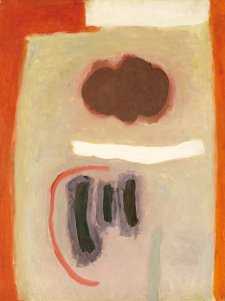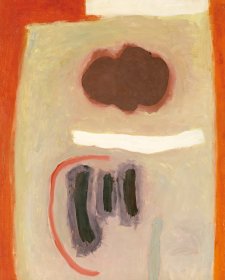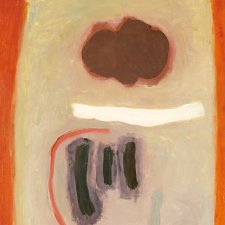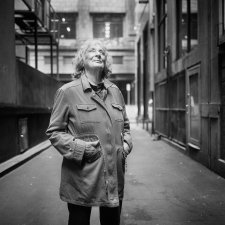Janet Dawson (b. 1935), painter, printer, teacher and stage designer, is known for her contribution to abstract art in Australia. Born in Sydney, she spent the first six years of her life in the rural New South Wales town of Forbes. Dawson's mother, who had studied art with Will Ashton, recognised her daughter's talent early and was advised by Ashton to encourage it. She had her first formal lessons following her family's relocation to Melbourne in the early 1940s, attending the private art school run by artist and illustrator Harold Septimus Power. In 1951, aged sixteen, she enrolled at the National Gallery School and attended night classes with Sir William Dargie. Five years later, Dawson won a National Gallery of Victoria Travelling Scholarship and went to London, where she enrolled at the Slade School and the Central School to study painting, etching and lithography. She travelled in Italy and worked as a proof printer in Paris before returning to Melbourne in 1961. She held her first solo exhibition the same year and in 1963 set up an art school and workshop, where she printed the work of artists such as Albert Tucker, Charles Blackman and Russell Drysdale. Dawson was one of only three women included in the renowned exhibition of Australian abstraction, The Field, at the National Gallery of Victoria in 1968. After several years in Sydney, Dawson moved to live in the bush near Binalong, NSW, in 1973. That year, she won the Archibald Prize with a portrait of her husband, the late writer, actor and playwright Michael Boddy. In 1978, she and Boddy founded The Bugle Press, producing fine art books and prints. Her work is represented in all major public collections in Australia, and has been the subject of exhibitions at the National Gallery of Victoria (1979), the National Gallery of Australia (1996) and a 2006 touring exhibition, Janet Dawson Survey.
Portraits
Self portrait between 1951 and 1953
Janet Dawson Janet Dawson age 16
Janet Dawson, Paddington, Sydney 1966 (printed 2000)
David Moore Janet Dawson age 31



Janet Dawson
Recorded 1965



Figurative foundation
Joanna Gilmour explores the life and art of the Australian artist Janet Dawson.



Janet Dawson
When soulmates Janet Dawson and Michael Boddy moved from Sydney to a property, Boddy was clear about why: ‘Our marriage is one long conversation - we moved to the bush so we could talk to each other without so many interruptions.’




